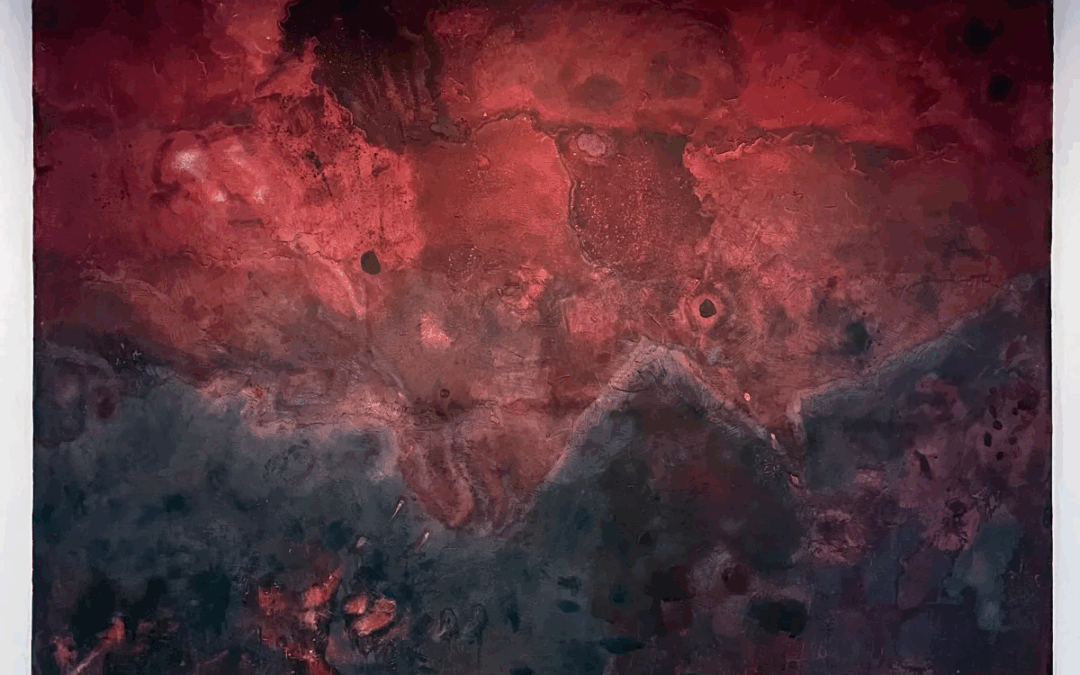SANTA FE — In DAHODIYINII – SACRED PLACES, Dakota Mace’s [MFA ’19] first solo museum exhibition at SITE Santa Fe, the Diné artist confronts genocide, grief, and inequality not through a linear narrative, but through a framework of Ałk’idáá: “events stacked up through time.” In extended exhibition labels, she writes: “ … in Diné philosophy, time is not a line; it’s a series of layers, movements unfolding simultaneously. The past isn’t something distant or detached — it’s woven into the present, and the present is braided with the future.” Mace confronts these layers head-on, investigating not just what is visible on the surface but the deeper strata of memory and Diné experience.
The exhibition opens with “Halchíí (Red area)” (2024), an earthen wall mural made in collaboration with Keyah Henry (Diné), which recalls deep red watercolor. It roots viewers in Land as both witness and archive. Composed of cochineal pigment, ash, corn pollen, and earth gathered from Diné Bikéyah (Navajo homelands), the work is site-specific and impermanent — adhered directly to the gallery wall, it will vanish when the exhibition ends.
As an opening gesture, “Halchíí” signals the importance of close looking across the 34 works in the show, which include lithographs, Mace’s camera-based and camera-less photography, such as cyanotypes and chemigrams; beadwork; tanned hides; a collaborative textile piece; and a sound installation. Spanning five galleries organized around themes of “Land,” “Memory,” and “Stars,” the exhibition reflects Mace’s Diné lens, where homelands, memory, and language are woven tightly together.
“Chahash’oh (Shadow)” and “Adinídíín (Light)” (both 2024) in the next room further draw us into the interplay between Diné philosophy and Mace’s meticulous material exploration. The former is made from sheep hide, jingle cones, and vintage Italian glass beads, while the latter uses the same materials, substituting deer hide for sheep. Invisibly suspended as if floating, each hide is adorned with beadwork and strings that fall in deliberately arranged lines. While distinct in composition, the works exist in conversation, not opposition. They guide us to consider the Diné philosophy of Hózhó (roughly translated to “balance”) not through didactics, but through the works’ presence and form. As a Diné asdzání (Navajo woman), I was attuned to the use of sheep and deer hides — materials that speak differently across Indigenous geographies. Sheep are central to Diné lifeways in the Southwest, while for me, deer hide evoked connections to our Athabaskan relatives across the Southwest and into Canada. Mace learned tanning techniques both virtually and in person, studying with Indigenous and non-Indigenous teachers in British Columbia and Wisconsin. These resonances stretch across land and lineage, embedded in the skin of the work.

